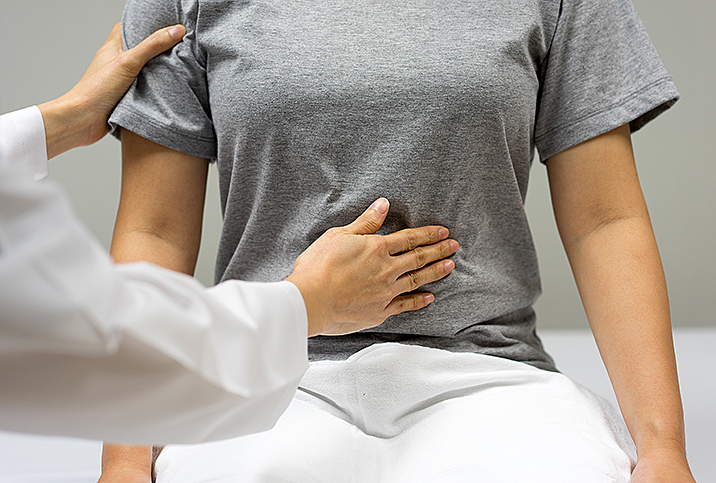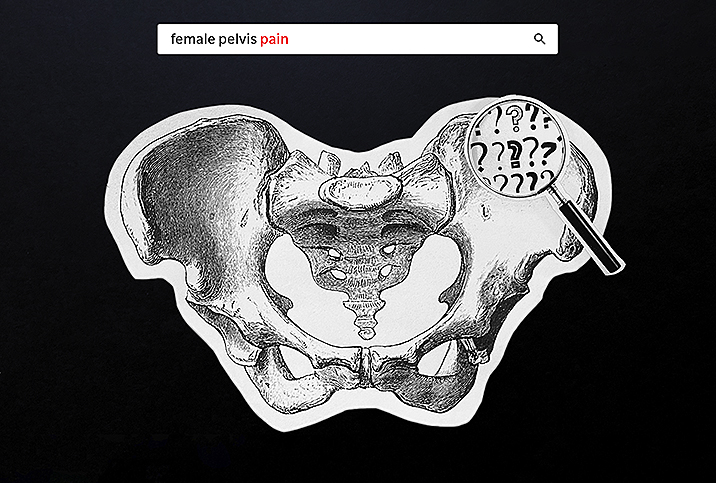How I Was Diagnosed with Endometriosis

The field of female reproductive health has come a long way in the past century. Practitioners have promoted safe sex, encouraged HPV vaccination and normalized discussion about periods. However, there are still too many unanswered questions about women’s reproductive organs and disorders.
We know a lot about endometriosis—still considered a “mysterious disorder” that impacts 1 in 4 women in the United States—but there’s so much more we don’t know. Most important, we have no cure-all or magic pill that can treat endometriosis, so millions of women continue to suffer daily.
What is endometriosis?
Endometriosis occurs when the tissue that is typically found inside the lining of a woman’s uterus—the endometrium—grows outside of the uterus. It can cause extreme inflammation, pain and menstrual problems. Endometrial tissue can be also found outside the ovaries, fallopian tubes or intestines.
The trouble is that endometriosis can only officially be diagnosed by undergoing laparoscopic surgery, which allows doctors to officially find endometriosis and remove some of the scarring. This procedure can lead to a negative diagnosis, of course, and even if endometriosis is found and removed, it typically comes back, sometimes during the next menstrual cycle.
Warning signs of endometriosis
I’ve always had painful periods—I’m talking at least one full day of not leaving my bed except to crawl to the bathroom on all fours—but I just assumed every other woman went through the same thing. I don’t like showing my vulnerabilities, so the pain was something I kept to myself as much as possible. I’d tell friends I had a migraine, work to finish or other plans on days when my pain was unbearable.
When I first got my period at 14, the pain was intense. I recall complaining to my friends about it a month later, but since they had been dealing with periods for years, they were pretty unsympathetic. Then I said something that caused alarm among the group.
“I just wish I knew I’d be bleeding every day until I hit my 50s,” I moaned.
My best friend stared at me incredulously. “You need to go to a doctor,” she insisted. “That’s not normal.”
My mom, a medical assistant at the time, was panicked when I told her. Losing blood for more than a month isn’t healthy, and I was already borderline anemic. I finally saw an OB-GYN who deemed the solution to be birth control. No tests, no bloodwork, just a pill pumping synthetic hormones into my body.
I didn’t know at the time that this constant bleeding was a warning sign of endometriosis. Even my mother, who also suffered from this disorder, had no idea what I had. It turns out the symptoms can be very different from woman to woman. So I took my pill daily and moved on, accepting the pain as a regular part of my life.
The real diagnosis comes later
I wasn’t diagnosed with endometriosis until I was almost 30 years old; technically, I still do not have an official diagnosis. One afternoon, after attempting to work under my desk in a fetal position, my co-worker begged me to talk to a doctor.
I was lucky enough to find an OB-GYN who recognized my symptoms immediately. She didn’t recommend a laparoscopy, and I ultimately chose not to get the procedure, since many women I knew had the surgery multiple times without much success in reducing the pain.
Finally discovering I had endometriosis was actually a bit of a relief. It was comforting to be able to put a name to my pain and to understand that for all of those years, when I felt crazy and weak, I was battling something real. And pretty scary.
Living with endometriosis is frustrating
Endometriosis is still somewhat of a mystery to the medical field. They don’t know why some women get it and others don’t, and no one has a good method for stopping or reversing it. While my pain is significant, I’ve found ways to manage it that prevent me from ever having to go to the ER. Considering many women have pain that causes them to pass out, I know I’m one of the luckier ones.
Of course, the pain is just one of the many side effects of endometriosis. While my pain actually lessened when I stopped taking the pill I’d been prescribed, I began to experience intense bloating during my cycle, which I’d never before endured. It’s uncomfortable, at times painful and just generally unflattering. I also suffer from cramping before and after my cycle, which means I typically get one pain-free week a month.
On top of that, endometriosis has other side effects that can impact your daily life. It can cause painful bowel movements, pain during sex, acne, vaginal dryness and may even lead to infertility. In fact, struggling to conceive is how many women find out they have endometriosis.
Worst of all, treatments that help one woman can aggravate the disorder in another. For some, heat is a source of relief, while ice works better for others. Birth control pills can lessen endometriosis pain, but for me, getting off the pill was one of my smarter decisions. Low-inflammatory diets can help some women but have no effect on others.
This disorder is individual to each woman suffering from it and has no universal cure.
Finding inspiration from other women
Living with endometriosis can be challenging, but it is much more bearable when you find and connect with other women suffering from the same issues. For me, it’s been other women, not doctors, who have helped me find inventive and affordable ways to manage my pain and take control. Hearing my own memories in other women’s stories has been a powerful tool helping me cope with endometriosis.
















